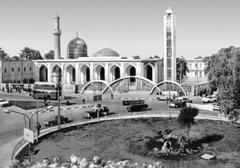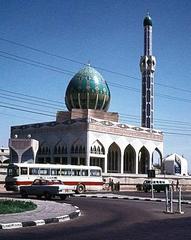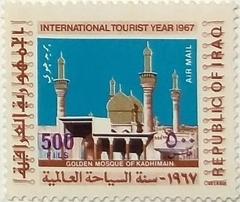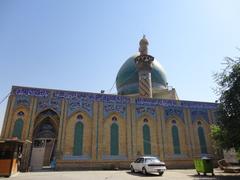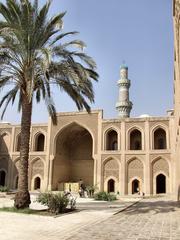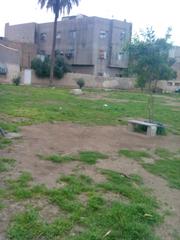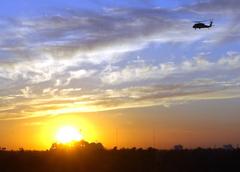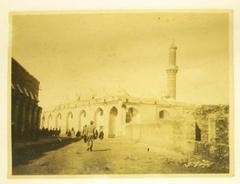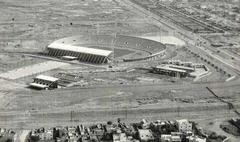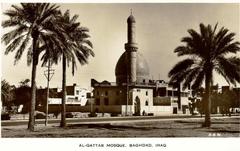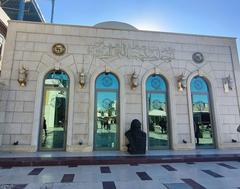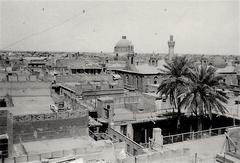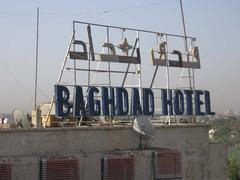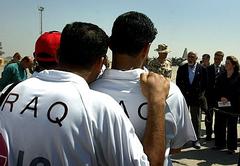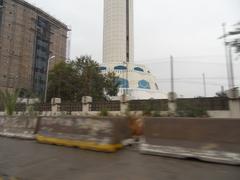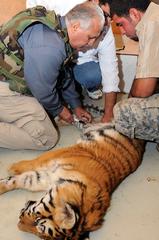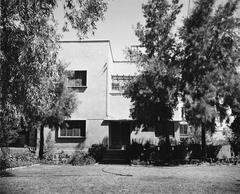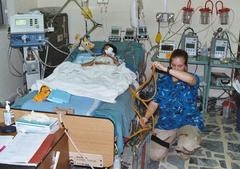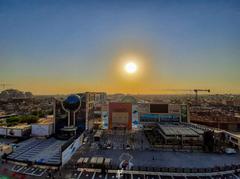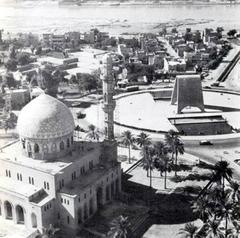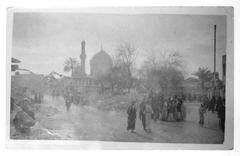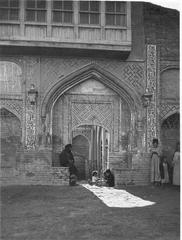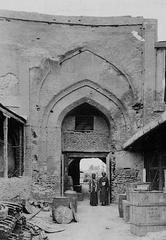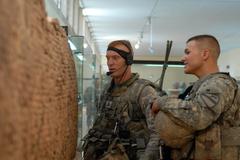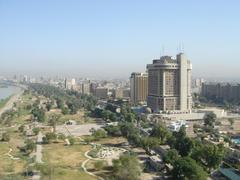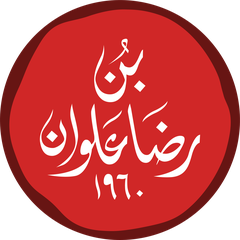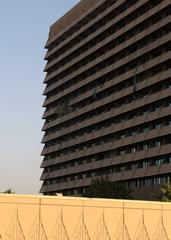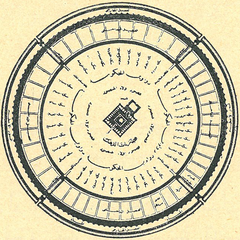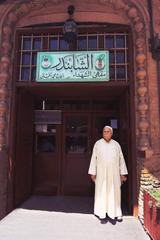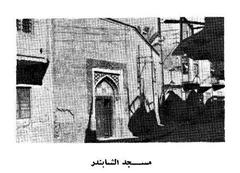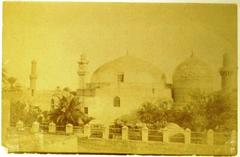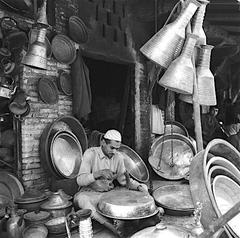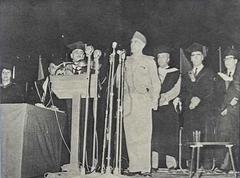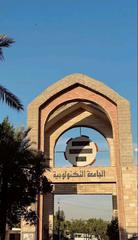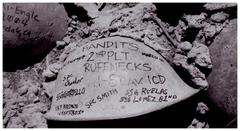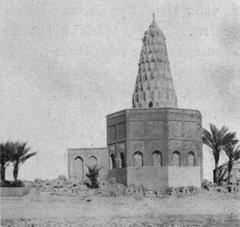Taj Palace Baghdad: Visiting Hours, Tickets, and Historical Significance
Date: 14/06/2025
Introduction
Nestled along the southern banks of the Tigris River, the Taj Palace (Arabic: قصر التاج, Qaṣr al-Tāj) stands as a lasting emblem of Baghdad’s illustrious Abbasid legacy and architectural innovation. Built during the late 9th century under Caliph al-Mu’tadid and completed by al-Muktafi, the palace once served as the heart of the Dār al-Khilāfat complex, symbolizing the zenith of political power and cultural sophistication during the Islamic Golden Age (Wikipedia). Although largely destroyed in the Mongol siege of 1258 CE, its historical footprint endures, attracting visitors eager to explore Baghdad’s layered past.
This comprehensive guide delivers essential information on the Taj Palace’s origins, architectural features, visiting hours, ticketing, travel tips, and its enduring significance for Iraq’s capital.
Table of Contents
- Origins and Construction
- Architectural Features and Layout
- Historical Significance
- Decline and Legacy
- Visiting Hours, Tickets, and Tips
- Nearby Attractions
- Visitor Experience and Practical Advice
- FAQs
- Conclusion and Summary
- References
Origins and Construction
The Taj Palace, meaning “Palace of the Crown,” was commissioned by Caliph al-Mu’tadid (r. 892–902) as part of an ambitious initiative to reestablish Baghdad as the Abbasid capital. Strategically located on the southern bank of the Tigris in East Baghdad, it formed the southern extension of the Dār al-Khilāfat (“Abode of the Caliphate”) complex, alongside the Hasani and Firdus Palaces (Wikipedia). Construction was momentarily halted in 899 CE due to environmental concerns, but al-Muktafi (r. 902–908) resumed and completed the project, ingeniously reusing bricks and stones from the ancient Sasanian palace at Ctesiphon to reinforce the palace against the river’s currents.
Architectural Features and Layout
The Taj Palace was celebrated for its intricate brickwork, elegant arches, and innovative design blending functionality with grandeur (e-a-a.com). Its most famous element, the semicircular “Cupola of the Ass” (Qubbat al-Himar), allowed the caliph to ride a donkey to its summit for panoramic views—an emblem of Abbasid ingenuity (Wikipedia). The palace was cooled by river breezes and surrounded by lush gardens, demonstrating advanced climate adaptation with wet reed screens and subterranean cooling rooms.
The palace’s circular planning echoed Baghdad’s original city design, and its domed audience chambers, frescoes, and faience panels showcased the era’s mastery of color and form (MyPluralist). The reuse of Ctesiphon’s Sasanian materials symbolized continuity with the region’s imperial past.
Historical Significance
Serving as both royal residence and center of governance, the Taj Palace was a focal point for diplomatic receptions, intellectual gatherings, and ceremonial events during the Abbasid Caliphate (MyPluralist). Its architecture and layout influenced subsequent Islamic buildings, inspiring domes, courtyards, and ornamental tilework in sites across the region (Spirit Travelers). The palace’s grandeur and cultural vibrancy underpinned Baghdad’s reputation as the intellectual and artistic hub of the medieval world.
Decline and Legacy
The decline of the Abbasid Caliphate led to the gradual deterioration of the Taj Palace, culminating in its destruction during the Mongol invasion of 1258. While only remnants remain today, the site continues to inspire historians, architects, and visitors, representing Baghdad’s enduring resilience and cultural pride (Wikipedia). Its legacy is evident in the architectural vocabulary of later Islamic monuments and in Baghdad’s ongoing efforts to preserve its historic core.
Visiting Hours, Tickets, and Tips
Visiting Hours: The palace grounds are typically open to visitors from 9:00 AM to 5:00 PM, Sunday to Thursday, in alignment with the Iraqi workweek. Hours may be adjusted for security or special events; always verify with local sources before your visit.
Tickets: Entry to the exterior and gardens is generally free, as the primary structure no longer stands. Fees may apply for nearby sites or special exhibitions. Carry small cash (5,000–10,000 IQD; ~$3–$7 USD) and confirm any charges in advance.
Accessibility: The site features some paved walkways, but uneven terrain may pose challenges for those with limited mobility. Contact local guides for assistance if needed.
Best Times to Visit: Spring (March–May) and autumn (October–November) offer comfortable temperatures and pleasant surroundings, while summer heat can exceed 40°C (104°F) (Kurby Blog).
Travel and Safety Tips:
- Use reputable taxis or arrange transport via hotels, as public transit is limited (Travel.gc.ca).
- Carry valid ID and expect to pass through security checkpoints.
- Dress modestly, with long sleeves and trousers (or skirts), and women should bring a headscarf for religious or palace interiors (Over Your Place).
- Photography is allowed in public areas, but always seek permission before photographing people or sensitive locations.
- Stay updated on security advisories and consider guided tours for added safety (Against the Compass).
Nearby Attractions
Enhance your visit to the Taj Palace by exploring other historical and cultural sites in Baghdad:
- Hasani Palace: Another Abbasid-era palace nearby.
- Al-Mustansiriya Madrasa: An ancient Islamic educational institution.
- Baghdad Museum: Home to artifacts from the Abbasid period and beyond.
- Al-Mutanabbi Street: Renowned for its book markets and literary heritage (Spirit Travelers).
- Mausoleum of Abdul-Qadir Gilani: A significant Islamic shrine.
- Liberation Square: The city’s central plaza, reflecting modern history (Trek Zone).
Visitor Experience and Practical Advice
Getting There: The Taj Palace is centrally located and accessible by taxi or on foot from nearby districts. Navigation may involve passing through military or police checkpoints; always carry identification and have your destination ready to state.
Facilities: Restrooms are basic; bring hand sanitizer and tissues. Onsite cafes are uncommon—carry water and snacks, especially during hot weather.
Accommodation: Baghdad offers a range of options, with well-known hotels near the Tigris providing security and modern amenities (Rocky Road Travel).
Health and Safety: Medical services are limited; bring a health kit and necessary medications (Travel.gc.ca). Drink only bottled water and avoid street food.
Legal and Seasonal Considerations: Avoid carrying alcohol, drugs, or politically sensitive materials. The best travel months are October to April, when the weather is mild.
Travel Insurance: Ensure medical evacuation coverage, as many policies exclude Iraq (UK FCDO).
FAQs
Q: What are the Taj Palace visiting hours?
A: Generally from 9:00 AM to 5:00 PM, Sunday to Thursday—confirm locally before visiting.
Q: Is there an entry fee?
A: The gardens are free to visit. Fees may apply for nearby attractions or special exhibitions.
Q: Are guided tours available?
A: Yes, private tours can be arranged through licensed guides or operators.
Q: Is the site accessible for disabled visitors?
A: Outdoor areas offer partial accessibility, but uneven terrain may limit access.
Q: Can I photograph the Taj Palace?
A: Public area photography is allowed; always seek permission for people or sensitive zones.
Conclusion and Summary
The Taj Palace is a profound symbol of Baghdad’s golden Abbasid era, blending architectural ingenuity with layers of political and cultural history. Although only fragments of its original grandeur remain, the site offers a meaningful connection to centuries of innovation, resilience, and cosmopolitan spirit. As Baghdad prepares to welcome more visitors as the Arabic Capital of Tourism for 2025, the Taj Palace and its surroundings invite travelers to witness the enduring legacy of Iraq’s capital.
For up-to-date travel advice, virtual tours, and cultural insights, download the Audiala app and follow us on social media. Plan your visit to the Taj Palace and immerse yourself in Baghdad’s vibrant heritage today.
References
- Taj Palace in Baghdad: Visiting Hours, Tickets, and Historical Insights, 2025, (Wikipedia)
- 10 Best Architectural Buildings in Baghdad, 2025, (e-a-a.com)
- Rise and Fall of Baghdad, 2023, (MyPluralist)
- Visiting the Taj Palace in Baghdad: History, Architecture, and Travel Tips, 2025, (Spirit Travelers)
- Is It Safe to Travel to Iraq?, 2025, (Against the Compass)
- Baghdad Arabic Capital of Tourism 2025, 2025, (IraqiNews)
- Baghdad Attractions: The 10 Best Tourist Attractions in Baghdad, (Kurby Blog)
- Discovering Baghdad: Culture & Traditions, (Over Your Place)
- Iraq Travel Advisory, (Travel.gc.ca)
- Baghdad Travel Guide, (Rocky Road Travel)
- Iraq: Travel Advice, (UK FCDO)
- Baghdad, (Trek Zone)
- Baghdad Travel Tips, (Beyond the Bucket List)
- Baghdad, (Turist.com)
